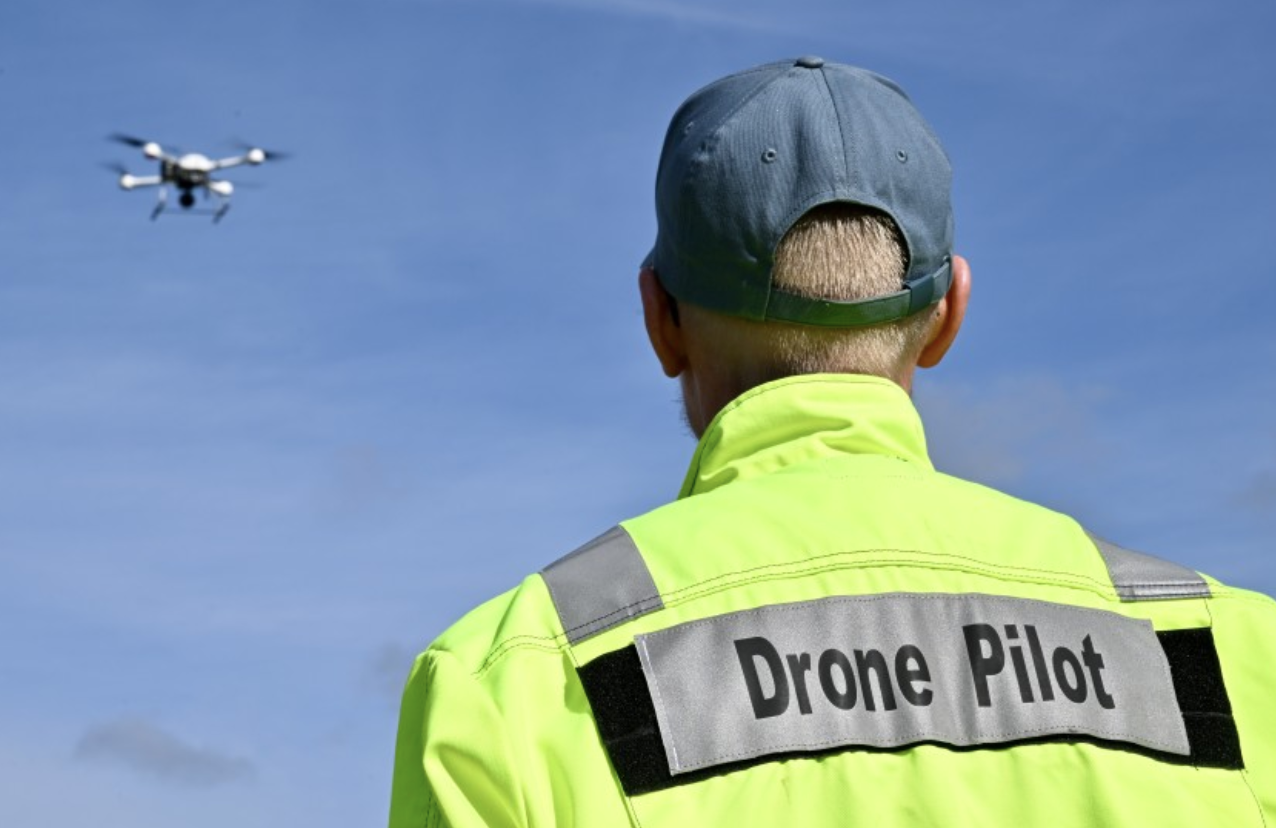- Vodafone, Frequentis, DLR, and the Rostock Fire Department test drones in rescue operations
- Drones send initial aerial images directly to the control center – even before the emergency services arrive
- Approximately 7 minutes faster response time for rescue operations
- More detailed operational planning thanks to reliable aerial images, even at hard-to-reach locations
Emergency call 112: An inaccessible accident or a forest fire that is spreading rapidly. Every second counts for rescue workers – but often crucial information about the location or the situation on the ground is missing. Especially in confusing, hard-to-reach areas such as forests, helpers often reach their limits in those all-important first minutes, because many details remain unclear over the phone.
Vodafone, the Rostock Fire Department, and Frequentis have joined forces under the leadership of the German Aerospace Center (DLR) in the ADELE funding project to improve this situation: With 5G-controlled drones, emergency services receive high-resolution live images directly in the control center and in the emergency vehicle even before they arrive at the scene.
“When it comes to human lives, every second counts. We are now providing rescue workers with a digital tool that enables them to act faster and more safely in an emergency. This is because drones share live images from the scene of the emergency even before rescue workers arrive there. This helps rescuers to help people in need much more quickly,” explains Michael Reinartz, Director of Innovation at Vodafone Germany.
5G drone: aerial assistance
ADELE stands for “Automated Drone Deployment from the Control Center” – a project funded by the Federal Ministry of the Interior through the Federal Agency for Digital Radio of Security Authorities and Organizations (BDBOS) that is testing the use of drones in the real-world environment of the Rostock Fire Department. As part of the project, Vodafone’s 5G technology is being combined with existing control center software such as LifeX and ASGARD.
When an emergency call requiring the use of a drone is received, it is automatically dispatched directly from the control center. In real-world operations, it flies beyond visual line of sight (BVLOS) and is fully automated. The DLR’s special rescue drone, equipped with high-resolution camera sensors, then takes off directly toward the emergency site and transmits high-resolution live video data directly to the control center via Vodafone’s 5G real-time network – even before the first emergency vehicle leaves headquarters. This provides emergency services with important visual information, such as the development of the fire, access routes, potential hazardous material storage facilities, and the presence of people in the affected area. This information enables more targeted planning of the required emergency units, reducing the average response time from over nine minutes to around two minutes. A clear time saving that can save lives.
“We bring video and sensor data live to our LifeX or ASGARD control center and to the responding forces immediately. This means that everyone involved in the operation has the same information about the scene of the incident immediately and at all times, regardless of where it is located. This shared situational awareness speeds up decision-making and ensures a faster, more appropriate, and effective response to the situation,” Dr. Günter Graf – Vice President New Business Development
Simplification for control center systems
Frequentis and DLR ensure smooth application in practice by integrating drone control directly into existing control center systems such as the ASGARD or LifeX communication systems. Frequentis’ Automated Drone Dispatch System (ADD) is connected via a special interface. When an emergency call comes in, the control center software can transmit the location determined from the emergency call data as geo-coordinates to the ADD. The ADD then suggests a possible drone deployment based on GPS data and the location.
“Our rescue drone combines high-resolution camera sensors with an optimized, low-risk flight trajectory based on current movement data. We ensure compliance with all legal requirements and full GDPR conformity to guarantee both safety and data protection,” says DLR project manager Andreas Volkert.
Safe drone flights and faster approvals with DroNet Hub
BVLOS flights (drone flights beyond visual line of sight) are subject to strict regulations, especially in populated areas. For approvals, ground and traffic data must be used to assess the risk and enable safe flight routes. Vodafone has developed the “DroNet Hub” for this purpose – a platform and complementary tool that provides up-to-date and dynamic data to make drone flights safer and approval processes more efficient. Authorities are already using this data to assess and ensure the safety of drone traffic.
More speed and safety for emergency services
“With ADELE, we are bringing more speed and clarity to the everyday work of the police, fire department, and other emergency services. The live images provide emergency responders with valuable information that not only gives them a better overview, but also saves valuable time. This allows decisions to be made faster and better, and help to be provided even more quickly,” said Dr. Chris von Wrycz Rekowski, Senator for Finance, Digitalization, and Public Order of the Hanseatic and University City of Rostock.
The project is now starting with its first operations. The long-term goal is to integrate the automated use of drones into the everyday work of authorities and organizations.



